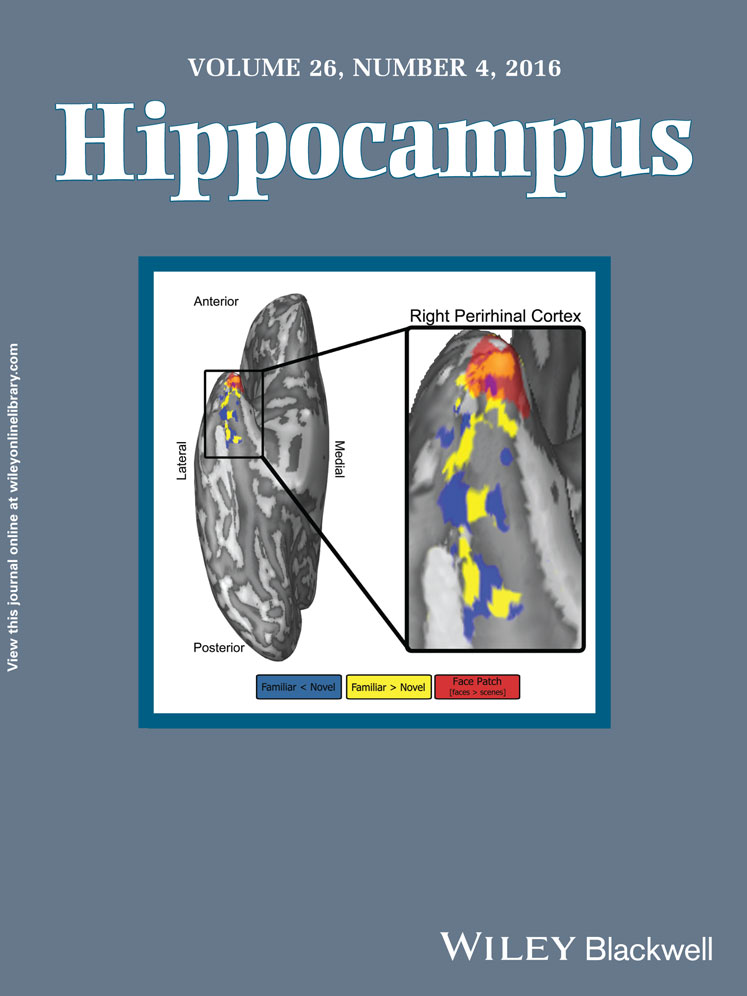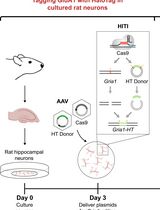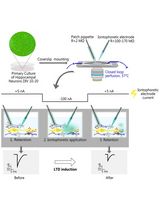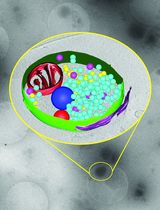- EN - English
- CN - 中文
Quantitative Electron Microscopic Assay Using Random Sampling from Single Sections to Test Plastic Synaptic Changes in Hippocampus
单切片随机取样定量电子显微技术检测海马区突触可塑性的变化
(*contributed equally to this work) 发布: 2018年08月05日第8卷第15期 DOI: 10.21769/BioProtoc.2946 浏览次数: 6386
评审: Geoffrey C. Y. LauAnonymous reviewer(s)
Abstract
Studies over several decades on the organization of the CA1 hippocampus–a particularly favorable model for learning, memory and certain forms of cognition–have shown that the synaptic network in this brain region is plastic (Fortin et al., 2012). Recent evidence suggests that a number of environmental and endogenous stimuli may have a substantial effect on hippocampus-dependent cognitive function, implying enhanced synaptic plasticity in this brain region. Stimuli (e.g., food restriction, enriched environment, social interaction, gene-loss [knock-out animals], etc.) can trigger structural and functional plasticity (e.g., spine formation, increased expression of neurotrophic factors, synaptic function and neurogenesis) in the hippocampus (Stewart et al., 1989; Andrade et al., 2002; Babits et al., 2016). Using quantitative electron microscopy, we can study the synaptic neuropil of CA1 hippocampus in rodents during short- or long-term treatments and/or stimuli. Within the scope of this electron microscopic methodological construct, the density of various synaptic connections, the morphology and internal structure of excitatory spine synapses (e.g., the mean length and width of postsynaptic densities) can be quantified. Such quantitative ultrastructural measurement using high-resolution electron-microscopy may be applied to observe structural manifestations of synaptic plasticity in rodent brain tissue. The presented ultrastructural protocol may empower researchers to reveal details and synaptic changes which may not be obvious using only light microscopy. Ultrastructural data may provide substantial advances in our understanding of the changes in hippocampal synaptic architecture under different conditions.
Keywords: Brain (大脑)Background
We performed electron microscopy using random sampling from single sections to optimize sample size (over ~100 images per sample) and to detect changes in synaptic features in control and treated animals. The errors introduced by this approach are relatively modest (e.g., we found a numerical density of perforated spines in control animals similar to that of earlier studies also using single-section analysis (Calverley and Jones, 1987 and 1990). Our aim is not to make stereologically-rigorous estimates of the absolute values; instead, we want to determine whether there are significant differences between normal and treated animals. Since we use the same sampling method for all experimental groups, we should be able to detect any substantial changes induced by an appropriate treatment protocol. However, such random sampling has a potential to underestimate differences; other methods should also be used to confirm the impact of a given treatment on the hippocampus.
Materials and Reagents
- Pipette tips
- Aluminum foil
- Glass slides
- ACLAR® Fluoropolymer Films (Electron Microscopy Sciences, catalog number: 50425-10 )
- Glass engraving pen
- Sterile Scalpel Blades #11 (Electron Microscopy Sciences, catalog number: 72044-11 )
- Copper Grids (e.g., 300 mesh) (Sigma-Aldrich, catalog number: G4901 )
- Grid Storage Box, 100 Capacity (Electron Microscopy Sciences, catalog number: 71140 )
- Parafilm two-way stretch 100 mm x 38 m long (TAAB, catalog number: P069 )
- Glass vials with PE stoppers (Fisher Scientific, catalog number: 03-339-26C)
Manufacturer: DWK Life Sciences, catalog number: KFS60965D2 . - Glass beakers
- Whatman® qualitative filter paper, Grade 1 (Sigma-Aldrich, catalog number: WHA1001150 )
- Cyanoacrylate superglue
- Paraformaldehyde (4% in PB) (powder) (Sigma-Aldrich, catalog number: 158127 )
- Glutaraldehyde (Electron Microscopy Sciences, catalog number: 16310 )
- NaH2PO4·H2O (Sigma-Aldrich, catalog number: S9638 )
- Na2HPO4·7H2O (Sigma-Aldrich, catalog number: S2429 )
- HCl (Sigma-Aldrich, catalog number: 30721 )
- NaOH (Sigma-Aldrich, catalog number: S2770 )
- Osmium tetroxide solution (2% in H2O) (Sigma-Aldrich, catalog number: 75633 )
Notes:- This stock solution can be diluted with 0.2 M PB to reach the final 1% working concentration used for contrasting.
- Extremely toxic, handle only under an approved fume hood, wear proper protective clothing, handle with care; do not dispose of in sinks; follow local regulation for toxic waste disposal.
- This stock solution can be diluted with 0.2 M PB to reach the final 1% working concentration used for contrasting.
- Ethanol, absolute (diluted with distilled water as requested by Procedure) (Merck, catalog number: 1009831011 )
- Uranyl acetate (Electron Microscopy Sciences, catalog number: 22400 )
- Propylene oxide (Sigma-Aldrich, catalog number: 82320 )
Note: Extremely toxic, handle only under an approved fume hood, wear proper protective clothing, handle with care; do not dispose of in sinks; follow local regulations for toxic waste disposal. - DurcupanTM Resin set (Sigma-Aldrich, catalog number: 44610 )
- Lead citrate solution (Leica Ultrostain II, TAAB, Leica Microsystems, catalog number: T534/2 )
Notes:- The 3% lead citrate solution is pre-packed in vacuum tight bags under helium atmosphere.
- Toxic, handle with care and collect after use; follow local regulation for toxic waste disposal.
- The 3% lead citrate solution is pre-packed in vacuum tight bags under helium atmosphere.
- 0.1 M Phosphate buffer (PB, pH 7.4) (see Recipes)
- 4% of formaldehyde solution with 0.2% of glutaraldehyde (see Recipes)
- DurcupanTM ACM resin (See Recipes)
Equipment
- Stereo (dissecting) microscope (Leica Microsystems, model: Leica S6D )
- Vibratome (e.g., Leica Biosystems, model: Leica VT 1000S )
- LSETM Incubator digital shaker (Corning, catalog number: 6781-4 )
- Refrigerator
- Fume hood
- Thermostat
- Ultramicrotome (Leica Microsystems, Reichert, model: Reichert Ultracut S )
- Diamond knife (Diatome ultra 45°, at least 1.5 mm wide)
- Perfect loop for section pick-up (Electron Microscopy Sciences, catalog number: 70944 )
- Transmission electron microscope, operating at 80 kV (e.g., JEOL, model: JEM-1011 )
- Circular-top Analog Hotplate Stirrer (DLAB MS-H-S, DLAB Instruments Ltd.)
- Forceps suitable for grid-handling
- Freezer
Software
- NIH ImageJ (https://imagej.nih.gov/ij/)
- Kaleidagraph (Synergy Software http://www.synergy.com/wordpress_650164087/kaleidagraph/)
- AnalySIS from Soft Imaging System (Münster, Germany)
Procedure
文章信息
版权信息
© 2018 The Authors; exclusive licensee Bio-protocol LLC.
如何引用
Marcello, G. M., Szabó, L. E., Sotonyi, P. T. and Rácz, B. (2018). Quantitative Electron Microscopic Assay Using Random Sampling from Single Sections to Test Plastic Synaptic Changes in Hippocampus. Bio-protocol 8(15): e2946. DOI: 10.21769/BioProtoc.2946.
分类
神经科学 > 神经解剖学和神经环路 > 皮层
神经科学 > 细胞机理 > 突触生理学
您对这篇实验方法有问题吗?
在此处发布您的问题,我们将邀请本文作者来回答。同时,我们会将您的问题发布到Bio-protocol Exchange,以便寻求社区成员的帮助。
Share
Bluesky
X
Copy link












